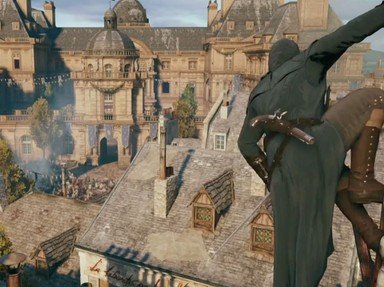Quiz Answer Key and Fun Facts
1. Which of these events was a genetic memory of Arno's in "Assassin's Creed: Unity"?
2. In which prison was Arno held after being falsely accused of killing his adopted father, Francois de la Serre?
3. Known more for his other activities, but still actively involved in the French Revolution, who became the new Roi des Thunes in "Assassin's Creed: Unity"?
4. Even though they were both Assassins, Arno eventually killed Pierre Bellec in a sword fight after it was discovered that he had been the one to kill Mirabeau, the Assassin leader. At what place, that had served as the Assassin headquarters for centuries, did this take place?
5. Arno Dorian's story in "Assassin's Creed: Unity" ends in 1794 with which event?
6. Which King of France was executed during the French Revolution?
7. To which palace was France's royal family moved in October 1789?
8. Who was the leader of the Reign of Terror during the French Revolution?
9. In "Assassin's Creed: Unity", Germain's skeleton was hidden in the Catacombs of Paris.
10. According to "Assassin's Creed: Unity", who cast the deciding vote to kill the king?
Source: Author
ponycargirl
This quiz was reviewed by FunTrivia editor
kyleisalive before going online.
Any errors found in FunTrivia content are routinely corrected through our feedback system.
